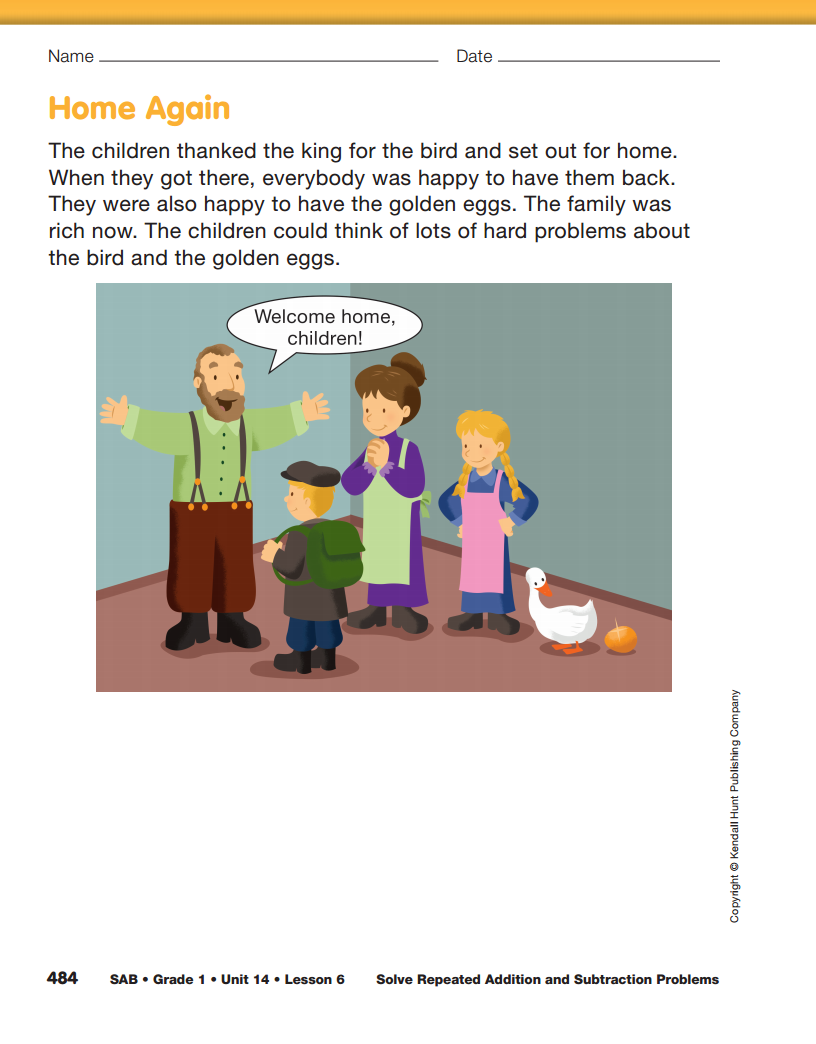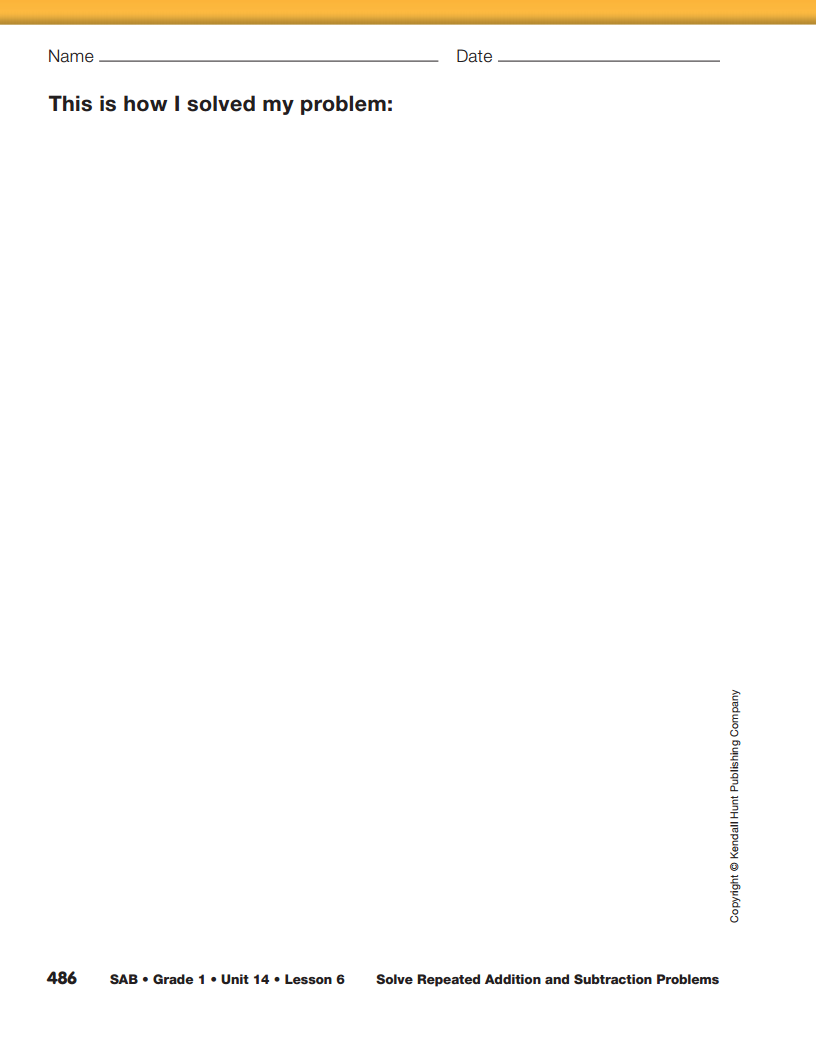Read the Home Again section of the Golden Eggs
pages in the Student Activity Book. Display and
direct students' attention to the prepared sample
problem for Check-In: Question 2 of the Golden
Reward Problem section. See Materials Preparation.
One morning Tess and Jack found 9 golden
eggs. They put them in boxes. If they put
3 eggs in each box, how many boxes would
they need?
After you pose the question ask:
- What information in the sample word problem is
important? (There are 9 eggs and 3 go in each
box.)
- What information is not very important? Why is it
there? (Possible responses: names of the children,
when they found the eggs; The extra information
makes the word problem more like a
story and more interesting to read.)
- What do you need to figure out? (how many
boxes the children will need)
- What label will you use — eggs or boxes? (boxes)
- Is there enough information for someone to solve
the problem? (yes)
- Is the question clear? (yes)
- How would you solve this problem? (Possible
response: Take 9 counters and put them into
groups of 3. I can make 3 groups of 3 "eggs" so I
know the children will need 3 boxes.)
- Is there another way to solve this problem?
Explain. (Possible response: There was a total of
9 eggs. 3 eggs could go in each box. I knew I had
to place the same number of eggs in each box, so
I used a repeated subtraction strategy. Each time,
I took 3 eggs away until I had 0 eggs left. I subtracted
3 three times, so that meant they needed
3 boxes.) [See Figure 1.]
After discussing the problem, assign Check-In:
Question 2. Have student pairs write their own problem
about the bird that lays golden eggs. The problems
can involve addition or subtraction, and can
involve multiplication or division concepts. Read the
list of words for problems that students can use
listed at the bottom of the page and ask students to
generate more.
Provide a list of questions, such as
the following, for students to refer to as they write
their problems:
- Did I provide enough information for someone to
solve the problem?
- Is my question clear?
- Do I know how to solve the problem?
As students write, circulate around the room and ask
them to read their problems aloud to you. Make sure
they clearly explain their answers on the other side
of the page. Students will present their problems to
others later in the lesson, and the problems can be
used in a center for targeted practice.
Use Check-In: Question 2 on the Golden Eggs pages in the
Student Activity Book to assess students' abilities to
represent addition and subtraction problems [E1]; represent
repeated addition and repeated subtraction [E2]; and solve
repeated addition and repeated subtraction problems [E3].

















